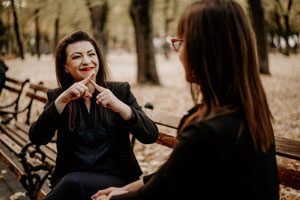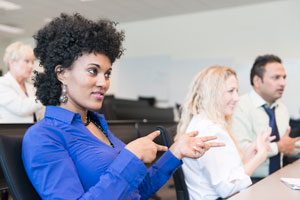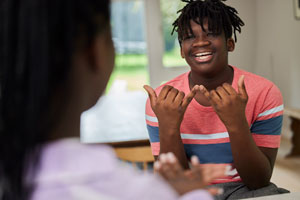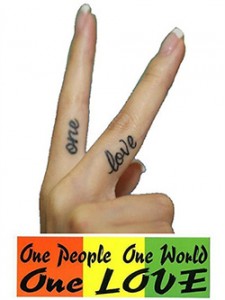LC Interpreting Services is now SignNexus!
Cultural Divide
 “After all the years of silence and rejection; I felt like I had lost my identity,” these powerful words stared at me from my computer screen, bringing tears to my eyes. The author, an individual with degenerative hearing loss, had recently attended an open-to-the-public cultural event I interpreted for. This person was incredibly grateful to have interpreters for the poetry and music because, as the e-mail went on to discuss, it’s so alienating to live in the grey area between the deaf and hearing worlds. As a CODA, I can kind of relate.
“After all the years of silence and rejection; I felt like I had lost my identity,” these powerful words stared at me from my computer screen, bringing tears to my eyes. The author, an individual with degenerative hearing loss, had recently attended an open-to-the-public cultural event I interpreted for. This person was incredibly grateful to have interpreters for the poetry and music because, as the e-mail went on to discuss, it’s so alienating to live in the grey area between the deaf and hearing worlds. As a CODA, I can kind of relate.

My mother and siblings are all profoundly deaf, and I grew up in a sign language household. My identity takes root in my family’s deafness, and I feel strong sense of pride regarding Deaf culture and ASL. I will admit, it can be challenging for me to speak from an unbiased perspective because I cherish my native language and the customs of my family. As I interact with a variety of people in my line of work, I am discovering that, no matter what their chosen mode of communication, “rejection” is one experience most deaf and hard of hearing individuals share. Often, the hardest rejection of all is that which comes from within the deaf community.
Throughout life, I have witnessed a tragic cultural divide. Working with hearing, hard of hearing, cochlear implant (CI) recipients, and individuals who range the full of spectrum deafness, I have met a number of astounding and inspirational people. People who have their own stories of struggle and success. This theme of rejection recurs in so many of their tales.
 Those who identify as “big D – Deaf” feel rejected by the mainstream implication that deafness is a disability. Oral communicators feel rejected by ASL purists. CI users feel rejected by Deaf culture. And the cycle continues. Nobody is doing it “correctly” if they aren’t doing it your way.
Those who identify as “big D – Deaf” feel rejected by the mainstream implication that deafness is a disability. Oral communicators feel rejected by ASL purists. CI users feel rejected by Deaf culture. And the cycle continues. Nobody is doing it “correctly” if they aren’t doing it your way.
Forced to exist in a social grey area, and so used to fiercely defending their own personal choices, each segment of the Deaf community fears that compromising will lessen their valid claim to righteousness. In America, we value individual freedoms. Why is it so hard to agree that what is right for one person, may not be right for another?
 If there is one thing all deaf individuals excel at, it is adapting to circumstances. Finding a common method of communication is not always easy, but is expected when working in an office, participating in your child’s after school activities, or even just buying coffee. In other words: communicating the best way you know how is a necessary part of life. Whether you choose do do so via technology, ASL, lip reading, or any other method of communication does not make you more right or wrong than anyone else.
If there is one thing all deaf individuals excel at, it is adapting to circumstances. Finding a common method of communication is not always easy, but is expected when working in an office, participating in your child’s after school activities, or even just buying coffee. In other words: communicating the best way you know how is a necessary part of life. Whether you choose do do so via technology, ASL, lip reading, or any other method of communication does not make you more right or wrong than anyone else.
Undermining the personal choices of other members of the community does nothing but perpetuate the cycle of fear, silence, and rejection. Stereotyping and projecting feelings of discrimination onto other people is not a step toward equality or acceptance. I will admit, I have been guilty of exclusionary thinking in the past because my passion for Deaf culture and ASL is strong– but when you are playing defense, you cannot progress. If my beautiful deaf nieces had cochlear implants, I would not love them any differently; and if they don’t learn bimodal communication, I will certainly not consider them inferior.

Making generalizations, or judgements, or belittling each others’ experiences is not positive for the deaf community, or humanity on the whole. We all want acceptance for who we are. If people living with hearing loss are treating each other as “less than,” how can we expect to educate mainstream culture? We must stand together, not fall apart. Lets break the cycle of “silence and rejection,” and move forward –together– on a path of respect.







